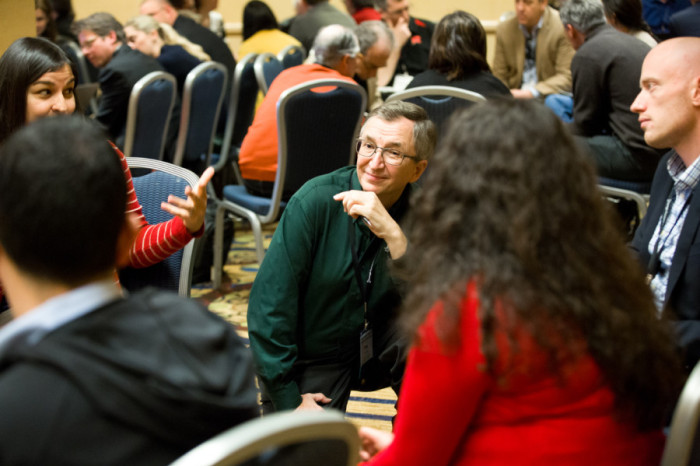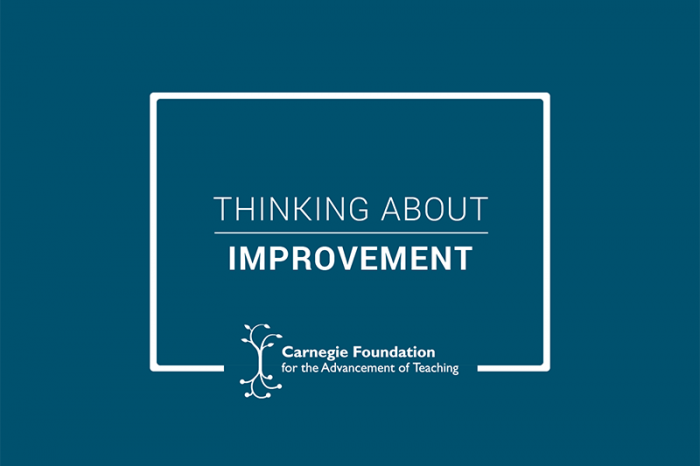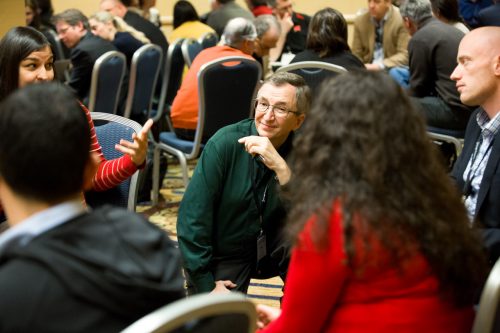Editor’s note: This is the third in a series of blog posts intended to highlight the main ideas of Learning to Improve and launch a conversation on how these ideas are being used within the education field.
Thanks to the world of social media, “it’s complicated” has become a phrase that describes all manner of challenges in the human condition. Whether the activity involved is painting a large and ornate room, with lots of corners and angles, or understanding how well the new math curriculum seems to be doing at my child’s school. When asked, “How is it going?”, we are inclined to say—“it’s complicated”.
This is a fine turn of phrase for everyday talk. But, technically, there is a difference between tasks like successfully painting a room, even a large one, and successfully getting a new math curriculum going. Painting the room is, indeed, complicated. Quality implementation of a new math curriculum is complex. And, this difference between complicated and complex truly matters.
Complicated problems can be very large, involved, and difficult to solve. However, even very large complicated problems have one, very important, characteristic. When faced with complicated problems, the steps to the end goal are clear and reaching the end goal is akin to following a recipe. The patterns of cause and effect are well-charted. Painting a large room is like that. For instance, we need to put tape on the walls to separate one color from another or we need to use multiple grades of sandpaper from coarse to fine to achieve a proper paintable surface. Even if there are many large rooms with lots of surfaces, we can arrange to have a painter or painters to get the job done. As long as each painter has the appropriate expertise and tools to execute the well-worked-out steps, we can be confident in the result.
The difference between complicated and complex truly matters.
For problems like these, even when things go awry there are known strategies to get back on plan. Any given step may be difficult and, even, fraught with potential for mistakes. But, seeing the whole task is relatively straightforward. Complicated problems are not, necessarily, easy. They might be difficult and time-consuming, and might require plenty of expertise. What distinguishes complicated problems from complex problems is that the way to the end—to a solution—is known. While context still matters, its role in solving complicated problems remains modest. The steps to a successful paint job are pretty much the same no matter where you are.
The progress and success in taking up a new math curriculum, however, is not at all like this. It is complex. The hallmark of complex problems is that there is no fixed recipe of steps that one can set up at the beginning, expect to unfold as planned, and be guaranteed of a good result. The introduction of a new math curriculum, for example, involves the actions of numerous teachers, many children, and their families, all of whom must work together in a supportive fashion. Participants will also need to learn how to use all sorts of new materials, like new books, perhaps games, manipulables, and computers.
The hallmark of complex problems is that there is no fixed recipe of steps that one can set up at the beginning.
Complex tasks, of this sort, are not packed into nice neat and predictable steps. Seeing at the beginning the full array of activity needed and how all of it must fit together is nearly impossible. Not surprisingly variation abounds in the execution of complex tasks. The same lesson may take on different forms in some classrooms because of differences in students’ background. Likewise differences in teachers’ background knowledge, training, pedagogical approach, and relational stance with students will cause each teacher to shape these lessons differently. In short, it is a complex system that binds curriculum to instruction, and instruction to teachers and students in each learning setting. Consequently, when one teacher’s mathematics instruction goes awry and children start to fail or continue to fail year over year, the fix to get things back on track is not so clear.
The problem for schools and school systems is that we often manage an educational problem as though it were like painting a room. In education, we behave as though things like math learning are complicated when they are actually complex. For example it is not uncommon for a school district to instruct all teachers to engage in the same set of steps to accomplish a successful math lesson. When a classroom fails to reach the desired goal in its math learning, it is also common for the leadership of a school or district to tell teachers to, more or less, teach the same content, in the same way, again—“only better next time.” Such a response may work well to repair a poorly sanded wall, but not for teaching. The process of diagnosing a teaching-learning failure is not a one-size-fits-all thing. It can be highly contingent on the particulars of the setting and context.
The process of diagnosing a teaching-learning failure is not a one-size-fits-all thing.
Now this is not to say that there is no knowledge about how to teach mathematics.. There is a lot of accumulated wisdom. For example, we know that teachers who can call on multiple representations of a problem (e.g., pictures, graphs, texts) have more success than those with limited representational repertoires. In short, flexible knowledge matters. The key, however, is not simply knowing that a specific math concept can be represented in five different ways. The key is understanding which of the five ways, organized in what sequence might best engage a given set of learners on a particular day. Effective teaching means both understanding the value of multiple forms of problem representation and knowing how to adaptively integrate them into the specifics of each classroom and its students.
Building systems that support both knowing that math has representational forms and that there will be variations in how these are taken up and used makes reforming math instruction a complex problem. Rather than searching for simple beginning-to-end recipes, the goal now is to identify protocols that make more effective adaptation easier to accomplish. Such protocols will likely take multiple forms, depending on contingencies embedded in instructional settings.
Now, imagine a networked community of professionals engaged in coordinated efforts to learn in systematic ways from one another. Working together, such a group might be able to identify key contingencies affecting instruction and test the efficacy of possible responses. A community deliberately structured to support instructional improvement would create rapid feedback systems that reveal what works for which teachers, under what circumstances, in which schools. And such protocols would evolve over time, as school professionals document and share what they did and what outcomes occurred.
The goal now is to identify protocols that make more effective adaptation easier to accomplish.
In sum, making progress on complex problems requires serious attention to how a promising solution or a new practice, or even a highly scaffolded lesson, can be effectively integrated into each specific context. This in turn requires us to build new social arrangements to develop and accumulate the practice-based evidence generated out of the ongoing work of an improvement community. We think such knowledge, contextualized around key aspects of instructional settings, helps educators faced with complex tasks to know what to do next. They won’t, necessarily, see the end game. But, they will know how to proceed. By building and accumulating such evidence, broad-based improvement in instruction becomes a more achievable goal.
So, when thinking about notions of complicated versus complex, educators on Facebook would be much better served to change their relationship status with schools from ‘It’s Complicated’ to ‘It’s Complex’”.
July 28, 2015
To reach increasingly high academic demands, we must better support student engagement. In “Motivation Matters," writers Susan Headden and Sarah McKay define key terms, discuss research findings, and explain promising approaches to boosting student motivation.
August 10, 2015
In response to Carnegie President Anthony S. Bryk's post on expanding the conversation about learning to improve, we received numerous responses. President Bryk replies to two of them in this post.









